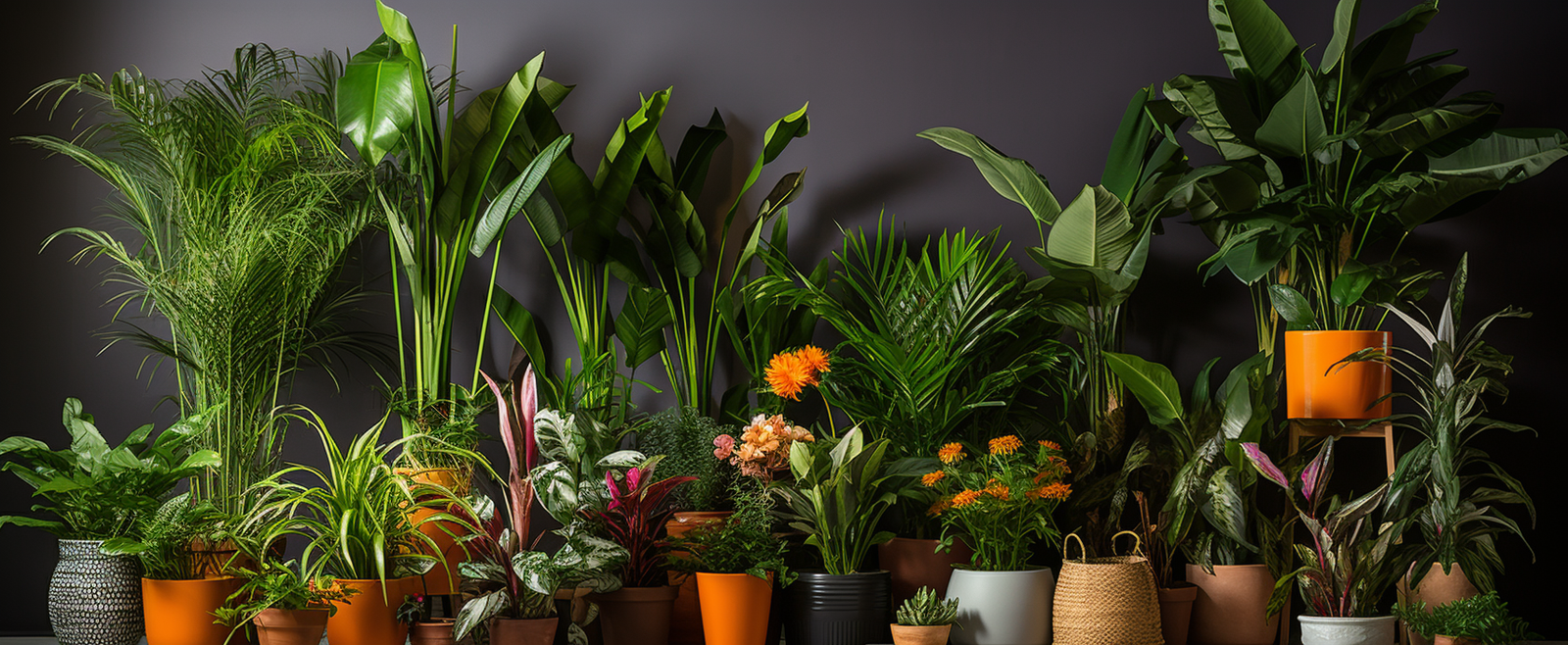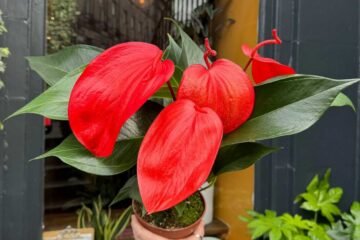How to grow, care, buy all types of tropical plants and flowers

Guides on plants
Understanding Plant Diversity: Growing and Caring for Every Plant Type
Dive into gardening: Learn the essentials of what a plant is, the anatomy of plants, and the classification of plant types and much more. This is the complete guide on plants.
67 mins read
The Ultimate How-To on Plant Propagation: Asexual & Sexual Methods
Plant propagation involves various methods, from sexual reproduction via seeds and pollination to asexual techniques like cuttings and grafting. These processes enable gardeners to multiply plants, conserve rare species, and create new cultivars, playing a vital role in agriculture, horticulture, and biodiversity preservation.
50 mins read
Plant Photosynthesis Explained: Sun, Water, and Carbon Dioxide (CO2) Key Requirements for Plant Growth and Energy
Photosynthesis converts sunlight, water, and carbon dioxide into sugars, like glucose. These molecules serve as primary fuel sources. They’re the powerhouse, driving essential processes like respiration, growth, and reproduction.
17 mins read
Planting Guide: How to Grow All Types of Plants (From Seeds to Potted Plants)
Growing seeds to seedlings and into full-grown plants requires a few key elements, such as adequate water, ideal temperature, the right amount of light, and nutrient-rich soil or potting mix.
26 mins read
Complete Guide to Plant Life Cycles: Understanding Annuals, Biennials, Perennials, and Ephemerals Plants
A plant’s life cycle refers to the developments it goes through during its lifespan. These usually come down to the seed, germination, growth, reproduction, pollination, and senescence stages.
12 mins read
Guide on Plant Reproduction: Sexual vs. Asexual Methods
Plants can reproduce and make new species that may or may not have the same genes as them. Plant reproduction process either involves sexual reproduction or asexual reproduction, and both methods provide different genetic products.
16 mins read
Learn About the Types of Plants in the Araceae (Aroids) Family
The Araceae family, also known as the Arum family or Aroids, is a family of monocotyledonous flowering plants. ...
24 mins read
How to Grow and Care for All Types of Alocasia Plants (Elephant’s Ear)
Learn about how to care and grow Alocasia Plants (Elephant's Ear). Alocasia plants are lush, large, lovely, and low-maintenance—the perfect green companions. These towering tropical beauties are members of the Araceae family, alongside other popular houseplants, like Philodendron and Monstera.
27 mins read
Understanding Plant Anatomy: Exploring Parts of a Plant, Structures, and Roles
Plants have many parts with different functions. The basic parts of a plant include root system, stem structure, leaf structure, reproductive organs, fruits, and seeds.
38 mins read
7 Steps on How to Identify Plants: Including Manual Identification and Plant Identifier Apps
Plant identification is the science of classifying plants based on their morphological features. To identify a plant you can either visual examine the leaves, roots and other parts of the plant or use plant identifier apps.
24 mins read
How to Grow and Care for All Types of Alocasia Macrorrhiza (Giant Taro)
Alocasia macrorrhiza is a common houseplant belonging to the Araceae family. Its care routine is similar to other tropical plants. They require sufficient sunlight and a good healthy soil and watering routine. Read more on this guide.
12 mins read
How to Grow and Care for All Types of Alocasia longiloba Plants
Alocasia longiloba Plants originally resided in rainforest settings. As such, they need moist and well-draining soil to ensure healthy growth.
12 mins read
How to Grow and Care for All Types of Alocasia Cuprea (Red Secret) Plants
Alocasia cuprea is a collector's houseplant from the Araceae family. The foliage is heart- or arrow-shaped, with a metallic sheen, pink undertones, and dramatic veining. Visit our Alocasia Cuprea care guide for more info.
13 mins read
How to Grow and Care for All Types of Alocasia X Amazonica (Amazonian Elephant’s Ear) Plants
The Alocasia x amazonica belongs to the Araceae family. With 140 Araceae types and more than 4,000 species, this species belongs to one of the largest plant families in the world. With dark green leaves and whitish veins, it’s become a popular houseplant that adds unique aesthetics to any house it sits in. Read more to learn how to care for Alocasia X Amazonica.
13 mins read
How to Grow and Care for All Types of Alocasia Polly (Alocasia amazonica) Plants
The Alocasia Polly is native to tropical lands and belongs to the Araceae plant family. Continue reading to learn about the plant and how to care for it.
13 mins read
How to Care For and Grow All Types of Alocasia Zebrina Plants
Alocasia zebrina (scientific name) is a tropical plant of the Araceae family. To grow a healthy Alocasia zebrina, you need to provide it with bright indirect light, well-drained soil, and a humid environment. Read further for more tips about the plant.
14 mins read
How to Grow and Care for Alocasia Black Velvet (Alocasia Reginula)
The Alocasia Black Velvet is a beautiful ornamental plant native to Malaysia. This houseplant is a member of the Araceae family. Let's make it clear: this indoor plant is incredibly picky when it comes to watering. Read more on how to care for the plant.
14 mins read
How to Grow and Care for All Types of Anthurium Plants: A Complete Guide
Anthurium is the largest genus of the arum family, Araceae. Native to Certain America, northern South America, and the Caribbean. Anthuriums are low-maintenance and tolerant of lower light conditions, making them ideal candidates for indoor spaces.
32 mins read
How to Grow and Care for Anthurium scherzerianum Plants (Flamingo Flower)
Anthurium scherzerianum plants are a part of the Araceae family and don’t require much attention to grow. All...
13 mins read
How to Grow and Care for Anthurium Crystallinum (Crystal Anthurium)
Anthurium crystallinum is a perennial shrub from the Araceae (Arum) family. Anthurium crystallinum , best known for its large, veined leaves. Like many tropical plants, it thrives in warm, humid conditions under bright but indirect sunlight with seasonal doses of a balanced liquid fertilizer.
13 mins read
How to Grow and Care for Anthurium Luxurians
Anthurium luxurians is a member of the Araceae family and grows year-round. With its distinctive heart-shaped leaves, deep...
16 mins read
How to Care and Grow for Anthurium Warocqueanum (Queen Anthurium)
The Anthurium Warocqueanum or queen Anthurium plant belongs to the arum family (Araceae) and genus Anthurium, Because of its stunning and commanding appearance, the rare flora garnered the title “Queen Anthurium” among green lovers.
12 mins read
How to Grow and Care for Anthurium Magnificum Plants
Anthurium magnificum plants belong to the arum/aracae family native to tropical America. It’s fairly difficult to find these gorgeous plants in the United States, making them desirable to collectors.
12 mins read



















